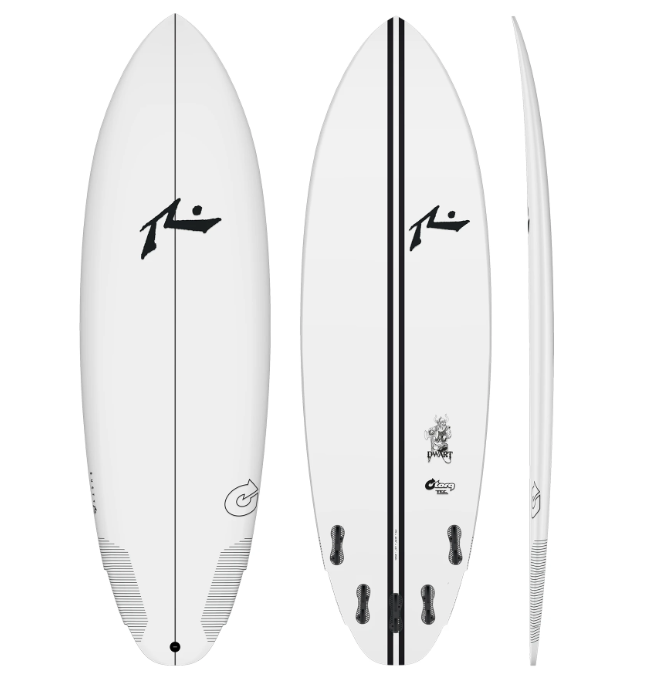Description
Rusty Dwart – Torq TEC – FCS II – 5 Fin ( 5’6 / 5’8 / 5’10 / 6’0 / 6’2 )
This board literally walks on water. Better yet, runs on water. We’re talking easy paddling, a fast ride, effortless glide, and lip-blasting vertical capabilities, all packed into one board. The Dwart takes the basic elements of a modern fish and fuses them with a few high-performance design techniques to take it to the next level. Do you want a board that does it all? The Dwart is the best yet.
The Dwart is available in Torq ACT and TEC construction.
| Dimensions | Volume |
| 5’6 x 20.25” x 2.32” | 29.2 ltr |
| 5’8 x 20.5” x 2.42” | 31.8 ltr |
| 5’10 x 20.75” x 2.5” | 34.3 ltr |
| 6’0 x 21” x 2.56” | 36.6 ltr |
| 6’2 x 21.25” x 2.63” | 39.1 ltr |
| 6’4 x 21.5” x 2.72” | 42.1 ltr |
TEC – TORQ EPOXY COMPOSITE
Torq Epoxy Composite offers performance shapes in our state-of-the-art epoxy layup. These boards have the best balance of Lightweight versus Durability. Using our own unique lamination process, we are able to use a very strong fibreglass lay-up of 6oz and 4oz combined in 3 layered deck and 2 layered base (with a 4 layered rail lap) with a high-density EPS foam but still achieve a board weight that matches a lightweight fibreglass lay-up.
The result is a light but very strong board, with good flex characteristics and as with all Torq’s, excellent value for money.
The TEC shortboards have 2 full layers of fibre over the deck and bottom. On the deck we use an extra 6oz deck patch with gives triple-layer ding resistance, but doesn’t resist the flex along the rail. The addition of a carbon filament stringer and UD carbon twin strips on the base makes these super springy and responsive.




